Composting is an ancient, sometimes complex, practice. Read here what compost is, how it is made, how it is used and everything else about black gold.

The compost – it has accompanied mankind for a very long time. Only discovered centuries after people settled down, it was one of the first ways to keep cultivated land fertile. As part of the history of fertilizers, compost made a huge contribution to the progress of human civilization. In this article we have summarized information on all areas related to compost, and we will also direct you to more detailed special articles.
contents
- What is compost?
-
Compost heap: benefits and function
- Benefits of a compost heap
- Function of a compost heap
- Building compost: instructions
- Use compost bin
- Proper composting: tips and tricks
- compost worms
- Compost soil: Fertilize plants with compost
- composting toilet
- Mix your own compost
- buy compost
What is compost?
Below you will find a summary on the subject - if you would like to find out more, you can find the full special article on the subject here compost.
Compost is what is put together by human hands (Latin composite = "the compiled") organic material that has gone through the process of rotting. Although compost is humus, humus cannot be called compost because it occurs naturally without human intervention. During composting, old structures of the starting material are first dissolved by the activity of worms, insects and various microorganisms. Gradually, molecular and atomic building blocks are isolated in order to then be connected to form new molecules – called humic acids. Visible humus flakes are then formed in connection with clay particles. Compost varies widely, but is generally brown to black, smells woody, is heavier than peat, lighter than sand, and has many medium-sized pores. The color and structure, pH value, nutrient content and stability of the compost change depending on the starting materials, the duration and conditions of rotting. The designation always provides information about the properties, as we have listed for you below.
| designation | emergence | properties | use |
|---|---|---|---|
| fresh compost | Rotting time 4 – 8 weeks, composting not completed | Nutrient content high, stability low | plant fertilizer |
| finished compost | min. 6 months rotting time | Nutrient content medium, stability medium | plant and soil fertilizers |
| ripening compost | 2 – 3 years rotting time | Nutrient content low, stability high | soil fertilizer |
| green waste compost | From green waste (green space maintenance, gardening and landscaping) | Nutrient content low, stability high | soil fertilizer |
| organic compost | From organic waste (organic bin) | Nutrient content high, stability high | plant fertilizer |
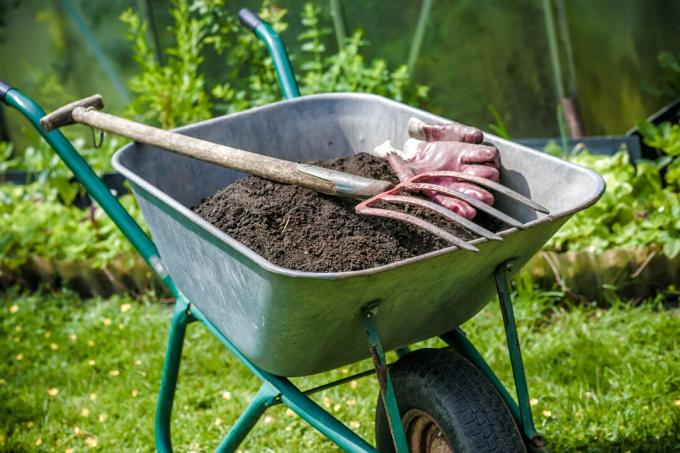
As you can see, the properties of compost can be changed over the rotting period and the raw materials. The stability indicates how easily the compost can be broken down again by microorganisms in the soil after it has been spread. A high level of stability means that the compost is a good soil fertilizer: it improves the soil properties over the long term, but provides hardly any nutrients for plants. A compost that can be used as a plant fertilizer will quickly degrade due to its low stability, releasing nutrients that are available to plants. However, it does not remain permanently in the soil and therefore does not improve its properties. The designations should always be considered together: A fresh green compost is more nutritious than a finished green compost - but always much less nutrient than a fresh organic compost.
Compost can be used in many different ways. It can also act as a liquid soil conditioner in the form of compost tea, which can be used to inoculate soil or composts with beneficial microorganisms. The benefits of using compost as soil or plant fertilizer are also well known in agriculture and horticulture.
Compost heap: benefits and function
Below is a summary of the benefits and features of compost heap – You can read more here in the full special article on the subject.
Benefits of a compost heap
Composting yourself has many advantages: the reduction in the size of the organic waste bin, the quick and easy disposal of Garden waste and maintaining quality, versatile fertilizer for soil and plants are arguably the most important. An ecological drive can also play a role: Composting yourself is the most environmentally friendly way of dealing with your waste. Unfortunately, you can hardly sell your compost and turn it into money - if you want to get rid of it, your options are rather to give it away or to dispose of it.
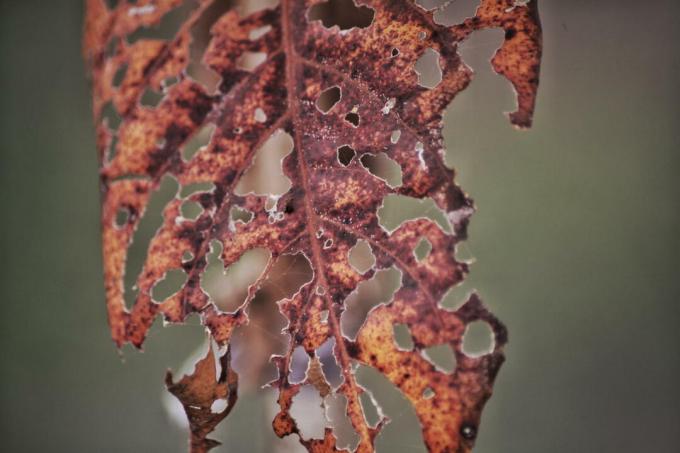
Function of a compost heap
Composting in the heap or composter is silent, stealthy and seemingly slow. In fact, a lot happens in the process. The activity of the organisms involved can even result in high temperatures of over 60 °C. What is happening there is part of the carbon cycle: the ancient structures of the mostly carbon (C) organics Waste is dissolved, microorganisms absorb carbon-containing compounds, use them to generate energy and breathe carbon dioxide (CO2) the end. High levels of nutrients and above all nitrogen accelerate decomposition by making the work of the microorganisms easier. After the structures have been broken down, new molecules are then formed in chemical and biological processes, namely the humic acids mentioned above.
Since composting is carried out almost entirely by microorganisms, their living conditions determine how quickly and how hot the rotting takes place. The oxygen and water availability, the temperature, the pH value and the nutrient content are influencing factors here. The person who carries out the composting can also influence this. Of course, this requires a certain amount of work: the right sorting, layers, an eventual one Turning, liming and supplementing of nutrients are activities to be carried out before the start of compost extraction are done. Depending on the type of composter used - rent, rotting box, quick and thermal composter or worm box - the work differs. In principle, however, everything always revolves around optimizing the living conditions of the little helpers - the composting organisms.
Building compost: instructions
Below we give you a summary of the topic build compost – detailed information can also be found in the special article.

Building your own composter has its advantages: not only do you usually save money, you also create the composter according to your own wishes and needs. Building one yourself is often not that complicated and requires neither great manual skills nor particularly unusual tools. With some wood, nails, a plastic tarpaulin and boards, a rotting box can already be made. A perforated barrel made of metal or plastic is sufficient for a quick composter, which with a little insulation can even become a thermal composter. Building a worm box is just as easy and inexpensive: you can build an expandable worm hotel using a few interlocking plastic boxes, a drain cock and two flower pots. the Bokashi bucket (in which, strictly speaking, fermentation and not composting takes place) is even faster completed: Two buckets are plugged into each other for this, sealed and a tap is used appropriate. With the lid on, the Bokashi bucket is ready to use. Of course, you can also use other materials than those just mentioned. Also from paving stones or bricks, a metal fence or expanded metal, even from pallets good composters, taking into account the needs of the composting microorganisms produce.
Buying a composter, on the other hand, can be both surprisingly cheap and expensive: price and composter quality are not necessarily in a clear relationship to each other. The appearance and durability often determine the price. Basically, it can be said that a composter can cost between 50 and 500 euros. The cheapest models weaken either in terms of functionality or durability, the most expensive models often score either with exceptional durability, a special and aesthetic design or with in which.
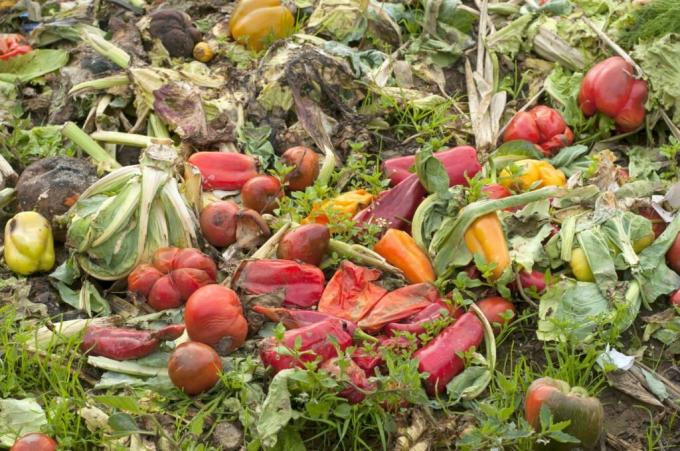
Use compost bin
In this context, a frequently asked question about compost systems in the garden is after Border distance: Can you get into legal problems if you compost directly at the border fence operates? The answer is: maybe. Although a compost is not considered a structural facility - and therefore it may be right on the border - it produces unpleasant ones If it smells, attracts pests, or disturbs your neighbor in any other significant way, it can take legal action against it proceed.
Below are some summary comments on the subject compost bin – if you want to continue reading, we recommend our complete special article here.
Compost bins come in different sizes, shapes, materials, and with or without ventilation and odor filters. Before you buy a bin for your organic waste, you should take a moment to consider the effects of the following variables.
| variable | Effect on... |
|---|---|
| size | Frequency of emptying, odor development, cleaning |
| shape | Comfort when emptying (waste sticking) |
| material | Cleaning (suitable for dishwasher), durability |
| ventilation | Odor development, cleaning, liquid development |
| odor filter | Odor development, fly infestation |
Especially the sticking of foul-smelling, moist and muddy waste interferes with emptying and makes cleaning less convenient. But you can do that with a particularly smooth and round interior and the use of compost bags or paper on the bottom of the bucket, good ventilation and choosing a rather small bucket escape.
There is often confusion about what can actually be disposed of in organic waste: This depends on whether you want to dispose of your waste in the organic waste bin or on your own compost heap. The organic bin usually includes:
- Vegetable and fruit leftovers (including citrus fruits)
- Salad leftovers (also with dressing)
- Coffee and tea residues, with bags (if without metal)
- All dairy products - in smaller quantities (except milk)
- Bones (in normal household quantities)
- eggshells
- nutshells
- Wilted bouquets and potted plants with soil (no tie or metal)
- Shrub and tree trimmings, bark and twigs
- lawn clippings
- Perennials (plastic tie must be removed)
- wild herbs
- moss
Packaging residue, broken glass, stones and clay, foils made of plastic and metal, on the other hand, never belong in the organic waste. In the case of small animal litter, boiled, salted, leftover meat and larger quantities of dairy products, the district or the local disposal point decides. This link is a useful website that gives you the way to proper disposal points.
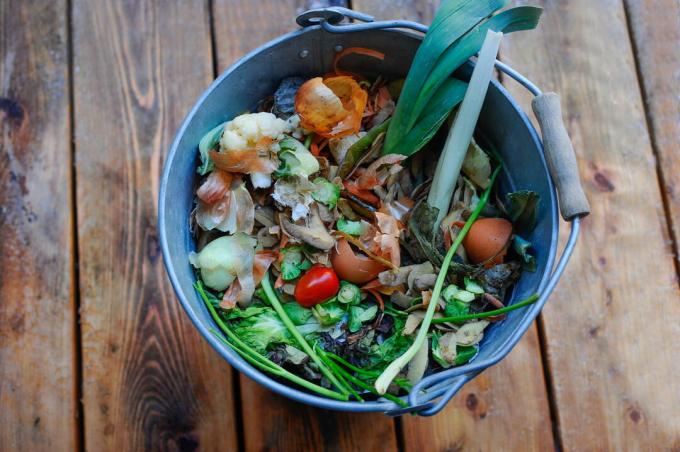
If you want to dispose of your waste on your own compost, the following also applies: animal products, cooked and salted foods are taboo. The microorganisms in your compost are “raw food vegans”. You should also make sure that diseased or seed-bearing plants do not end up in your compost in large quantities. However, this does not apply if temperatures of over 60 °C are reached in your composting. However, this is almost never the case with private composting.
Especially in the warm seasons and especially in rural areas, flies on and in the compost bin can be a real nuisance. Not only are they a nuisance, in extreme cases they are also hygiene pests. In this article we explain them to you Control of fruit flies in detail and also in the above-mentioned special article on compost bin you will find many references on this topic.
Instead of a bucket to collect your organic waste, you can also compost directly in your home: Worm boxes are now also available in unobtrusive designs that can also be used as seating permit. This eliminates the need to go to the bio bin. Instead, you can harvest vermicompost and "worm tea" in your own kitchen. The Bokashi bucket also produces a potent plant fertilizer from your organic waste in just a few weeks, as well as the so-called “Bokashi tea”, which is also a liquid that can be used as a fertiliser. The use of the Bokashi Bucket is explained in more detail in this article.
Proper composting: tips and tricks
Below you will find some summary remarks - more on the subject compost properly can be found here in the complete special article.
If you want to compost properly, you should understand the processes that take place in the compost. Composting is known to convert organic waste into compost. This happens in two phases: in the course of the main composting, the fresh compost is produced, from which in the post-composting first finished and then mature compost is made. The longer the rotting can take place, the more stable and nutrient-poor the compost becomes. In private composting, a cold composting usually takes place. This does not reach high temperatures above 60 °C, so that pathogens and weed seeds are not killed. It happens differently at recycling centers and in professional composting plants: by placing the heaps in one go the main composting is stormy and with suitable insulation the temperature rises to up to 80 °C - the result is a sterile compost.
Before you start composting, first choose a composter. You can choose between a classic windrow, a rotting box – i.e. a bordered windrow – quick composter, thermal composter, Rolling composters, worm boxes for use in the home or garden, or Bokashi buckets (which, as I said, strictly speaking contain a fermentation takes place). The different types of composters differ not only in volume, but also in how they are used The speed of composting, the work required and the product of composting differ yourself.
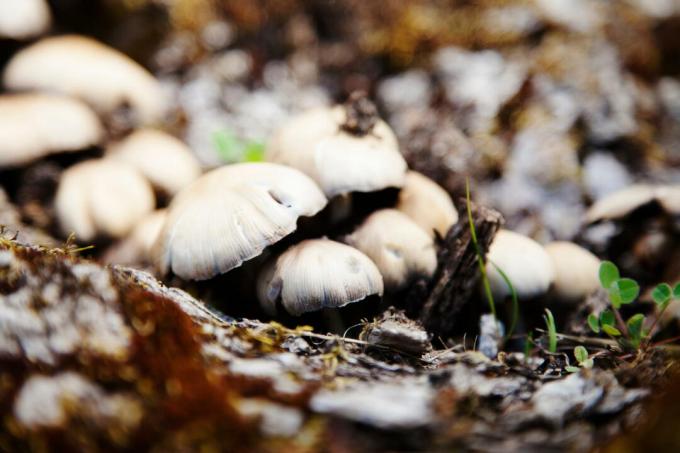
After choosing the composter, it is set up in a location that is as beneficial as possible. This should be partially shaded, protected and large enough to carry out the necessary work. In addition, there should be healthy and loose soil under the composter. And if possible, it should neither be located directly on the border to the neighbor nor too far away from the place where your compost waste is produced.
The living conditions of the composting microorganisms determine how well and how quickly the composting takes place. The table below shows the influencing factors and possible measures you can take.
| factor | effect | influencing |
|---|---|---|
| humidity | Microorganisms need water to live and multiply | Shaded, partially shaded location, if necessary. humidify (summer) |
| temperature | High temperatures promote the activity of microorganisms | Partially shaded location, insulation of the composter, cover with insulating material, large volume leads to higher temperatures |
| oxygen | Microorganisms breathe oxygen | Use of structural material, loose layering, transplanting, composter should allow circulation |
| nutrient | Microorganisms need nutrients to live and multiply, material that is too nutrient-rich leads to volume loss and unstable compost | Composting a mixture of nutrient-rich and poor material, fertilizing material that is too nutrient-poor with nitrogen |
| PH value | Higher pH value promotes the activity of microorganisms, lower pH value promotes fungi | Use of lime when too much "acidic" material ends up in the compost |
Tip: Fungi are also involved in composting. However, under their influence, poor-quality compost is formed, which is lighter in color and more acidic. It can be used in the garden with ericaceous plants such as Rhododendrons (rhododendron), blueberries (Vaccinium-Species), Gingerbreads (Gaultheria procumbens) and lavender heather (Pieris japonica) be used.
compost worms
Below we give you a summary of the topic compost worms –Here you will find the complete special article with further information.
Compost worms are those that are used in compost heaps, composting plants, composters or worm boxes to accelerate or influence composting. Although they owe the common earthworm (Lumbricus terrestris) look confusingly similar – unless you have a zoologically trained eye – they are not even the same genus. The species Eisenia fetida, Eisenia andrei and Eisenia hortensis are common compost worms, which you can also purchase in large quantities. They are adapted to life in flat, very nutrient-rich areas and also feel comfortable in narrow worm boxes. In addition, they are characterized by a particularly large appetite and complementary food preferences, which is why they are rightly offered and bought together. In contrast, many worms found in the "wild" live in deeper zones, have special ones Food preferences or are more frugal eaters - which is why many species do not support composting can be used.
Compost worms feed by pushing their mouths against the substrate - their food and habitat - by using their body muscles. In doing so, they absorb both organic and inorganic material – such as clay particles, small grains of sand and the like. After digestion, the worm droppings are excreted together with calcium and a layer of mucus, which results in stable "aggregates", i.e. crumbs. Bacteria and fungi then colonize these and convert the worm excrement into elastic, absorbent and even more stable humus flakes.

Because the digestion of the worms greatly accelerates the composting process, professional composting plants have long since “got the worm”. In the private context, compost worms are used in compost heaps and – much more intensively – in worm boxes. These are simple or divided boxes into which the compost is placed together with the worms. Models for indoor and outdoor use can be bought or you can make them yourself with relatively little effort. Due to their unobtrusive design and the additional use as seating, the dwellings of the worms have now even become socially acceptable. The very space-saving composting of your organic waste is therefore an ecological and economical alternative to the organic bin - and can even be operated in a city apartment.
Of course, being responsible for a few hundred to a few thousand worms also means some work and knowledge: In order for the worms to live well, digest a lot and reproduce, their basic needs must be met be. This includes, for example, that it must be dark, not too humid and that sufficient main and trace nutrients must be available. A lack of oxygen due to the compost being layered too compactly robs them of air and they could suffocate. And although they can digest a surprising amount of waste, too much or incompatible food can also have a negative effect.
Compost soil: Fertilize plants with compost
Below we give you a summary of the topic of compost soil. compost and the fertilization with compostare also dealt with in detail in the respective special articles.
First, to avoid confusion, here is the difference between compost and compost soil:
- Compost refers to the product of targeted composting, also called rotting. It has very variable properties that depend heavily on the starting materials, the composting time and the composting conditions. For this reason, the use of compost can vary between use as soil fertilizer and use as plant fertilizer. All gradations in between are also possible. A soil-fertilizing compost is low in nutrients, very resistant to microbial degradation and sustainably improves many soil properties. It can therefore make the soil fertile for a long time, but provides hardly any plant nutrients. A plant-fertilizing compost, on the other hand, is rich in nutrients, very unstable to microbial degradation and provides plants with many nutrients. However, it does not remain in the soil - or only to a small extent - so that fertility is not increased in the long term.
- Compost soils are mixed soils that contain, among other things, compost. Since pure compost is not an optimal basis for many plants, additives are used. These modify the properties of the mixture so that it is optimally adapted to the respective plant culture. Compost soil for summer flowers and potted plants, vegetables, shrubs or herbs with different compositions is available.
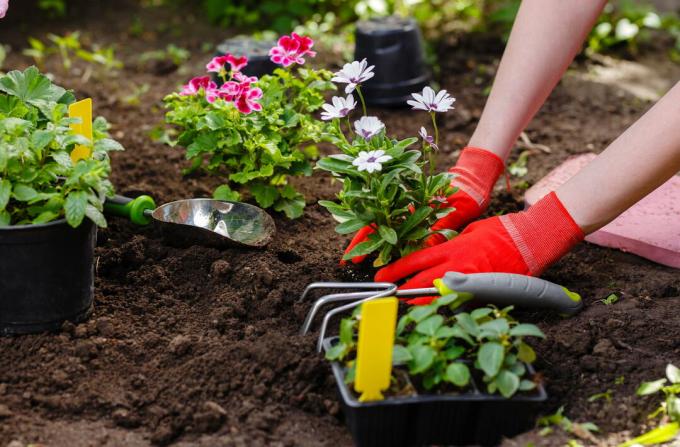
The use of compost soil is the same as with ordinary potting soil, but a few small things can change when switching from peat soil to peat-free soil. Your fertilization with compost soil may be lower. Some peat-free mixes may sag or need a little more frequent watering. However, since the extraction of peat in Germany and elsewhere is not, both from a regional and global perspective is justifiable, this minimal adjustment should ideally be a matter of course for every garden and nature lover be. You can also make compost yourself. This is still common practice in some nurseries, and secret mixing ratios are jealously guarded here. In the special article you will find some suggestions for your own mixtures and detailed information about possible additives. Of course, you will also find suggestions for peat-free soils there, which can also be found in hardware stores or garden centers. Also our organic soils - such as the Plantura organic potting soil – are peat-free or peat reduced.
The application of compost depends on what you ultimately want to achieve with the application. You can simply fertilize beds, lawns or wooded areas with nutrient-rich organic/ready compost or organic/fresh compost. For this purpose, a thin layer of 0.5 to 1 cm thickness is spread over the entire surface and only worked in flat. However, if your goal is to improve a barren piece of land, it is advisable to use green/mature compost and read this special article dealing with the humus economy deals.
composting toilet
At this point we present you with some summarizing remarks on the subject composting toilet – for more details, see the full special article here.
The composting toilet, also known as a dry toilet (TC), is often associated with wearing jute clothing and the eco-movement. Very few people know that the composting toilet is by no means a modern development of the outhouse, but that its use was common before the water closet (toilet). In fact, the story could have gone very differently and the toilet could have disappeared into the sinking of the story. At least from an ecological point of view, this might have been better: through the luxury of the fast Flushing with water results in an incredible amount of extra work and dirt on ours that can hardly be cleaned up water cycle. The use of the composting toilet, on the other hand, leaves the nutrient and water cycle separate and thus not only protects the water. After a sufficiently long composting or through pasteurization - i.e. heating - arises from our legacies hygienic compost that can be safely recycled for food production would be usable.

Composting toilets come in a variety of designs and for every purpose. What they all have in common is the use of so-called structural material, which binds liquid and promotes subsequent composting. It also reliably prevents odors. Bark mulch, wood chips or wood ash, for example, are suitable as structural material. Basically, the excrement is first collected and then composted. This means that sooner or later the collection container will have to be emptied. Depending on the system, the content has already turned into compost or not.
- The simple "collective toilet" collects solid and liquid together. It must be emptied frequently, otherwise the user will sooner or later be bothered by unpleasant smells. Modifications of the collective toilet allow the liquid to be separated, so that odors are greatly reduced. The volume is also reduced enormously in this way, so that the emptying interval is significantly extended.
- A slightly different type is the so-called dry composting toilet (TTC). With this variant, liquids and solids never end up in the same container, which is made possible by the special design of the toilet seat.
- Transitional forms between toilet and TC are also possible and modern compost toilets do not have to look like the throne of an extraterrestrial Alien-Kings: It is not only possible to build a perfectly inserted composting toilet yourself from kits, there are even specialized companies for this Area.
Apart from the fact that using a composting toilet makes a lot of ecological sense, it saves money. And installation is also possible in locations that are not connected to the sewage network. This can be the case in remote, waterfront or very rocky locations. Laying sewage pipes is not practical here. It is therefore hardly surprising that the compost toilet is quite common in some regions of Sweden.
Incidentally, the compost toilet is also available for rent, as it is as mobile as a toilet can be. For larger or smaller events, you can also choose the environmentally friendly version instead of the famous dixie toilet. Some of these rental toilets meet the highest standards and are so cleverly built that the User hardly realizes that during his relief he did something better than to protect the environment burden.

Mix your own compost
You can buy potting soil from compost or make it yourself. Especially if you have the opportunity to produce compost yourself, you should consider making your own potting soil from it. You can adapt these individually to the needs of different plants. The production of your own compost also has other advantages, such as the low price, environmental compatibility and the certainty of the ingredients contained. Of course, composting yourself takes some time and effort, and it is up to you to procure the additional additives. In the course of composting, first fresh compost, then finished compost and finally mature compost are produced one after the other. You can use all of these compost molds to mix the compost, but not all are suitable for every purpose. Before mixing, the compost should be heat sterilized to kill pathogens and weed seeds, which are very troublesome, especially in flower pots indoors. In this special article on the subject, we explain how this works and which mixtures are suitable for summer flowers, herbs and shrubs in beds or tubs, for cuttings or for sowing “Mix your own compost” in front.
buy compost
In addition to the summary that you will find below, we have the full special article on the subject here for you buy compost prepared.
Compost is a kind of man-made humus - and you can not only make it yourself, but also buy it. This is particularly useful when you need to plant, improve the soil or fertilize quickly compost and cannot wait a whole year for their own compost to be ready is. Compost can be purchased at hardware stores and garden centers in the form of the compost soil mentioned above. However, the small volumes and the relatively high price make this variant impractical if you need a little more compost. The cheapest option is therefore to drive to a local recycling center, where compost is constantly being made from the contents of the organic waste bins and the green waste from the green area maintenance. The materials are often mixed, but in some places nutrient-rich organic compost and nutrient-poor green compost are offered separately. Another possibility is the private way: Maybe you know a gardener whose compost production exceeds his own needs, so he gives you some of the black gold?
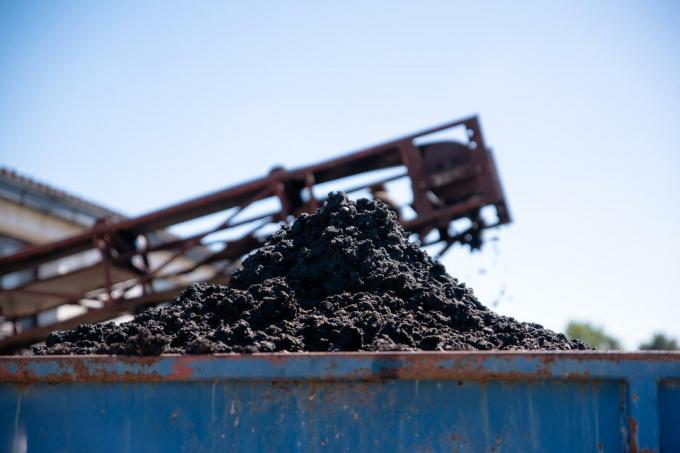
Of course, peat is also partly humus. However, in addition to this "swamp humus", peat also contains large amounts of undecomposed material. Peat is comparatively cheap and can be used to improve soil structure by adjusting its pH with lime. Over time, the material that has not decomposed becomes humus. However, since the use of peat causes many environmental problems - even the threat of climate change - co-caused, the use of peat should be avoided completely or at least as much as possible restrict.



